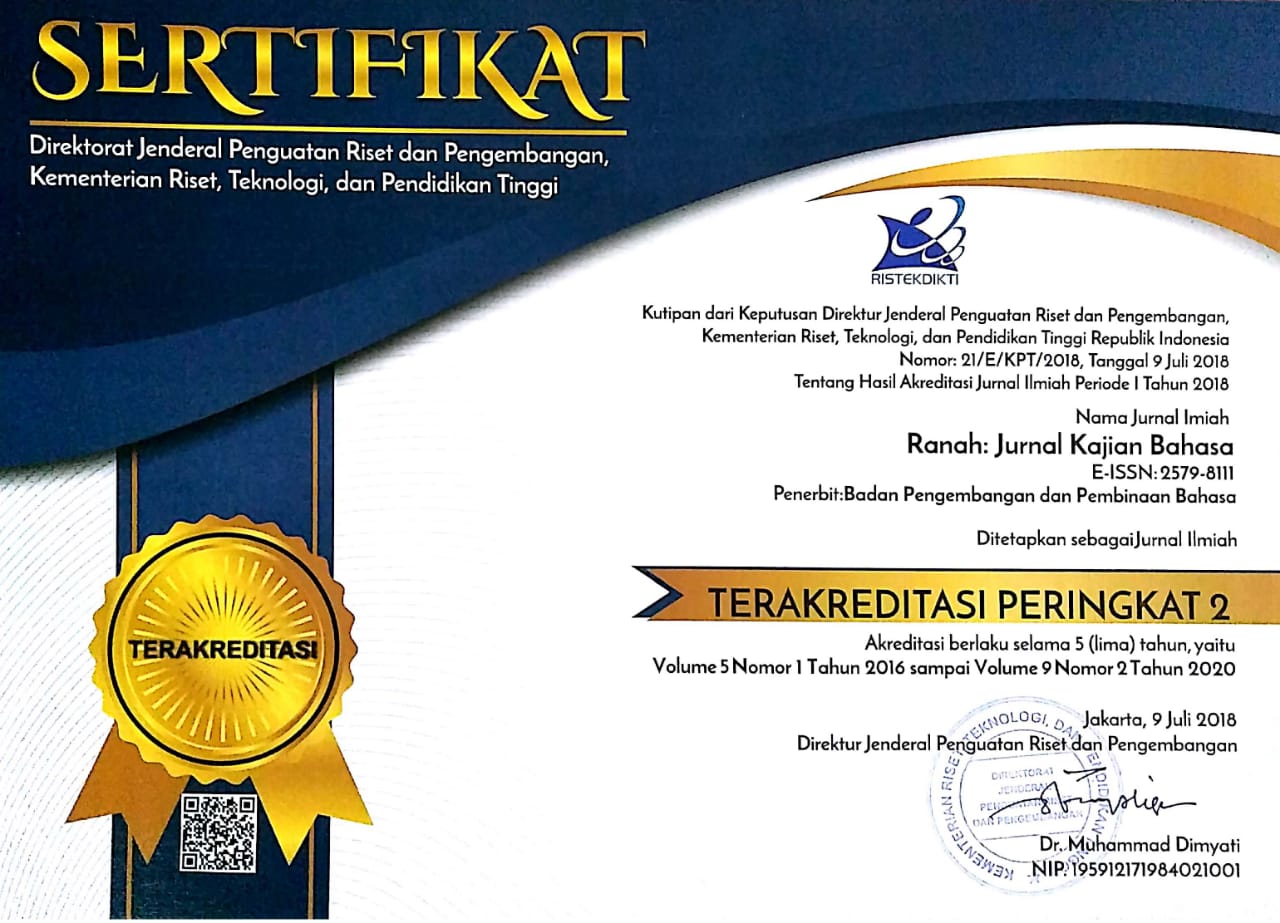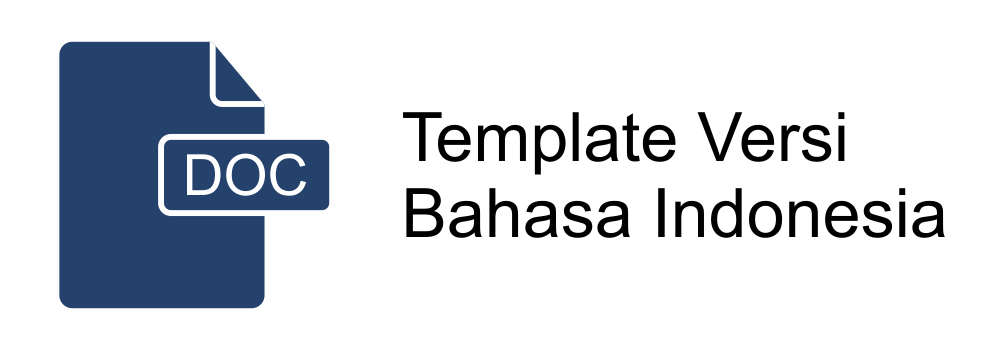Pengaruh Jenis Kelamin Penulis Sastra Anak pada Minat Baca Siswa Laki-Laki Kelas 5 SD Tetum Bunaya
Abstract
PIRLS test results in 2007 show that boys have lower reading interests than girls. On the other hand, female authors have recently dominated the children's book industry in Indonesia. The situation raises a question: Does the authors' sex influence 10-12 years old boys’ reading interest? In order to answer the research question, the writers conducted research using a descriptive qualitative approach and analyzed the data using reader-response theory. The population of this study is fifth-grader boys in Tetum Bunaya during the 2022 academic year. The data used in the study is the survey and interview results conducted with fifth-grader boys and fifth-grader class teachers. The objects of the studies are four digital chapter books entitled Aku Anak Kajang, Candiku yang Terhebat, Dendang Hati Gigih, and Festival Cap Go Meh di Kota Seribu Klenteng. The results of this study indicate that the authors' sex does not significantly influence the reading interest of fifth-grader boys in Tetum Bunaya during the 2022 academic year. Some intrinsic features that also affect boys' reading interest are eye-catching illustrations, historical facts, exciting actions, relatable characters, page-turning plots, conflict and tension, cultural values, and unusual settings.
Abstrak
Hasil Tes PIRLS tahun 2007 menunjukkan bahwa anak laki-laki memiliki minat baca yang lebih rendah dari anak perempuan. Di sisi lain, sastra anak Indonesia banyak didominasi oleh penulis perempuan dalam lima tahun terakhir. Hal ini memicu pertanyaan, apakah jenis kelamin penulis memiliki pengaruh pada minat baca anak laki-laki usia 10-12 tahun? Untuk menjawab pertanyaan tersebut, peneliti melakukan penelitian dengan pendekatan deskriptif kualitatif. Teori yang digunakan adalah teori respon pembaca. Subjek penelitian ini adalah siswa laki-laki kelas 5 di SD Tetum Bunaya tahun ajaran 2022. Sumber data dalam penelitian ini adalah hasil survei dan wawancara dengan siswa laki-laki kelas 5 dan guru kelas 5 di SD Tetum Bunaya. Objek penelitian adalah empat buku digital yang berjudul Aku Anak Kajang, Candiku yang Terhebat, Dendang Hati Gigih, dan Festival Cap Go Meh di Kota Seribu Klenteng. Hasil penelitian menunjukkan bahwa jenis kelamin penulis tidak secara signifikan memengaruhi minat baca siswa laki-laki kelas 5 di SD Tetum Bunaya pada tahun 2022. Beberapa unsur intrinsik yang turut memengaruhi minat baca anak laki-laki adalah ilustrasi yang menarik, fakta sejarah, aksi yang seru, tokoh yang membuat anak-anak merasa terhubung, alur yang membuat penasaran, konflik dan ketegangan, muatan budaya, serta latar tempat yang tidak biasa.
Keywords
Full Text:
PDF (Bahasa Indonesia)References
Ama, R. G. T. (2021). Minat Baca Siswa Ditinjau Dari Persepsi Keterlibatan Orangtua Dalam Pendidikan. Edunesia : Jurnal Ilmiah Pendidikan, 2(1), 219-229. https://doi.org/10.51276/edu.v2i1.122
https://doi.org/10.51276/edu.v2i1.122
Benton, M. (2004). Reader-response Criticism in International Companion Encyclopedia of Children's Literature Second edition (eds. Peter Hunt). Oxon & New York: Routledge Ltd.
Bray, G. B., & Barron, S. (2004). Assessing reading comprehension: The effects of text-based interest, gender, and ability. Educational Assessment, 9(3-4), 107-128.
https://doi.org/10.1080/10627197.2004.9652961
Casey, K., Novick, K., & Lourenco, S. F. (2021). Sixty years of gender representation in children's books: Conditions associated with overrepresentation of male versus female protagonists. PLoS ONE, 16(12), 1-19. https://doi.org/10.1371/journal.pone.0260566
Chiu, M. M., & McBride-Chang, C. (2006). Gender, context, and reading: A comparison of students in 43 countries. Scientific Studies of Reading, 10(4), 331-362
https://doi.org/10.1207/s1532799xssr1004_1
Dewayani, S. (2018). Seri Manual GLS: Membaca Untuk Kesenangan. Jakarta: Direktorat Jenderal Pendidikan Dasar dan Menengah Kementerian Pendidikan dan Kebudayaan
Fahrunisa, A. (2015). Pola Asuh Orang Tua dan Penguatan Guru: Adakah Pengaruhnya Terhadap Minat Baca Siswa SD?. Jurnal Ilmiah Pendidikan 34(1).
Graham, J., Tisher, R., Ainley, M., & Kennedy, G. (2008). Staying with the text: The contribution of gender, achievement orientations, and interest to students' performance on a literacy task. Educational Psychology, 28(7), 757-776. https://doi.org/10.1080/01443410802260988
Hidayat, R. S. (2004). Penulisan dan Gender. Makara Human Behavior Studies in Asia 8(1), 9-15.
https://doi.org/10.7454/mssh.v8i1.73
Higginbotham, S. (1999). Reading Interests of Middle School Students and Reading Preferences by Gender of Middle School Students in a southeastern state. Dikumpulkan sebagai disertasi untuk program master di Mercer University
Hochweber, J., & Vieluf, S. (2018). Gender differences in reading achievement and enjoyment of reading: The role of perceived teaching quality. Journal of Educational Research, 111(3), 268-283. https://doi.org/10.1080/00220671.2016.1253536
Hsiao, Y., Banerji, N., & Nation, K. (2021). Boys Write About Boys: Androcentrism in Children's Reading Experience and Its Emergence in Children's Own Writing. Child Development, 92(6), 2194-2204. https://doi.org/10.1111/cdev.13623
https://doi.org/10.1111/cdev.13623
Iser, W. (1978). The Act of Reading: A Theory of Aesthetic Response. London: Routledge & Kegan Paul.
https://doi.org/10.56021/9780801821011
Kapelner, A., & Weinberg, D. (2019). Do Readers Judge Books by Author Gender? Results from a Randomized Experiment. Socius, 5. https://doi.org/10.1177/2378023119868893
Logan, S., & Johnston, R. (2010). Investigating gender differences in reading. Educational Review, 62(2), 175-187. https://doi.org/10.1080/00131911003637006
Majid, S., & Tan, V. (2007). Understanding the reading habits of children in Singapore. Journal of Educational Media and Library Science, 45(2), 187-198.
McGeown, S., Goodwin, H., Henderson, N., & Wright, P. (2012). Gender differences in reading motivation: Does sex or gender identity provide a better account? Journal of Research in Reading, 35(3), 328-336. https://doi.org/10.1111/j.1467-9817.2010.01481.x
McGeown, S. P. (2015). Sex or gender identity? Understanding children's reading choices and motivation. Journal of Research in Reading, 38(1), 35-46. https://doi.org/10.1111/j.1467-9817.2012.01546.x
Meek, M. (2004). Introduction: definitions, themes, changes, attitudes in International Companion Encyclopedia of Children's Literature Second edition (eds. Peter Hunt). Oxon & New York: Routledge Ltd.
Merisuo-Storm, T. (2006). Girls and boys like to read and write different texts. Scandinavian Journal of Educational Research, 50(2), 111-125. https://doi.org/10.1080/00313830600576039
Mullis, I. V. S., & Martin, M. O. (2019). PIRLS 2021 assessment frameworks. Boston: TIMSS & PIRLS International Study Center
Nopitasari, Muazza, & Masbirorotni. (2021). Hubungan Manajemen Perpustakaan dan Peran Guru terhadap Minat Baca Siswa. Edukatif: Jurnal Ilmu Pendidikan, 3(5), 2459-2469. https://edukatif.org/index.php/edukatif/article/view/877
https://doi.org/10.31004/edukatif.v3i5.877
Nur'aini, F., Ulumuddin, I., Sari, L. S., Fujianita, S. (2021). Meningkatkan Kemampuan Literasi Dasar Siswa Indonesia Berdasarkan Analisis Data PISA 2018. Pusat Penelitian Kebijakan, 3(April), 1-8.
Pillinger, C., & Wood, C. (2013). A small-scale comparison of the relative impact of dialogic and shared book reading with an adult male on boys' literacy skills. Journal of Early Childhood Literacy, 13(4). https://doi.org/10.1177/1468798413491975
Rohim, D. C., & Rahmawati, S. (2020). Peran Literasi Dalam Meningkatkan Minat Baca Siswa Di Sekolah Dasar. Jurnal Review Pendidikan Dasar : Jurnal Kajian Pendidikan Dan Hasil Penelitian, 6(3), 230-237. https://doi.org/10.26740/jrpd.v6n3.p230-237
Scholes, L., Spina, N., & Comber, B. (2021). Disrupting the "boys don't read" discourse: Primary school boys who love reading fiction. British Educational Research Journal, 47(1), 163-180. https://doi.org/10.1002/berj.3685
Schwanenflugel, P. J. & Knapp, N. F. (2018). What is It with Boys and Reading? Retrieved from psychologytoday.com/us/blog/reading-minds/201803/what-is-it-boys-and-reading (accessed on December 12, 2023)
Shi, Y. (2013). Review of Wolfgang Iser and His Reception Theory. Theory and Practice in Language Studies, 3(6), 982-986. https://doi.org/10.4304/tpls.3.6.982-986
Soelistyarini, T. D. (2013). Representasi Gender Dalam Cerita-Cerita Karya Penulis Anak Indonesia Seri KKPK. Mozaik: Jurnal Ilmu Humaniora Vol. 14 (2), 182-197.
Sugiarti, Andalas, E.F. & Setiawan, A. (2020). Desain Penelitian Kualitatif Sastra. Malang: Penerbit Universitas Muhammadiyah Malang.
Thelwall, M. (2016). "Book Genre and Author Gender: Romance>Paranormal- Romance to Autobiography>Memoir". Journal of the American Society for Information Science and Technology, 64(July), 1-12.
Utami, R. D., Wibowo, D. C., & Susanti, Y. (2018). Analisis Minat Membaca Siswa Pada Kelas Tinggi di Sekolah Dasar Negeri 01 Belitang. Jurnal Pendidikan Dasar PerKhasa, 4(1), 179-188.
Uusen, A., & Müürsepp, M. (2012). Gender Differences in Reading Habits Among Boys and Girls of Basic School in Estonia. Procedia - Social and Behavioral Sciences, 69(Iceepsy), 1795-1804. https://doi.org/10.1016/j.sbspro.2012.12.129
Yuliani, S. (2013). Perbedaan Gender Dalam Penguasaan Bahasa Dipandang Dari Persfektif Psikologi Pendidikan. Pedagogi: Jurnal Ilmu Pendidikan, 13(1), 47. https://doi.org/10.24036/pedagogi.v13i1.2228
DOI: https://doi.org/10.26499/jentera.v12i2.6166
Refbacks
- There are currently no refbacks.






















